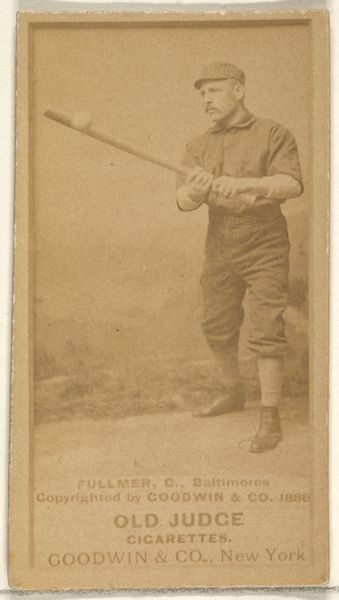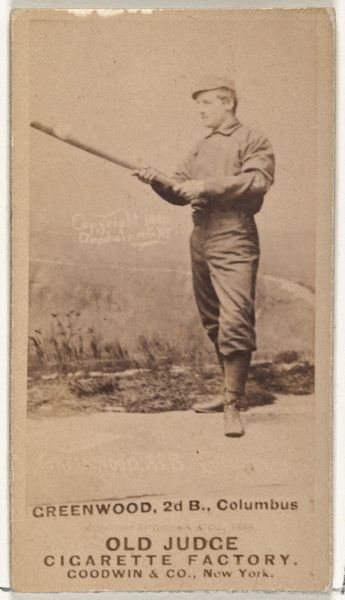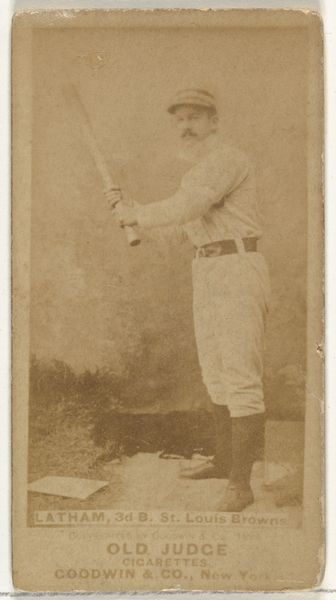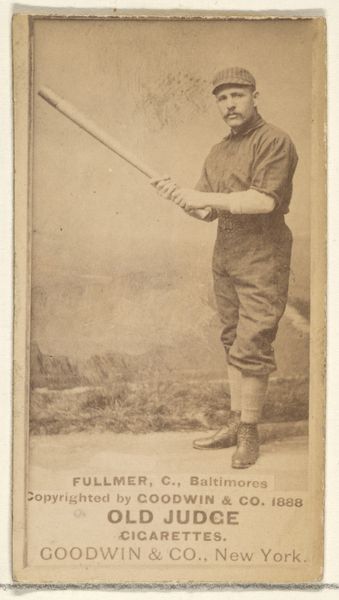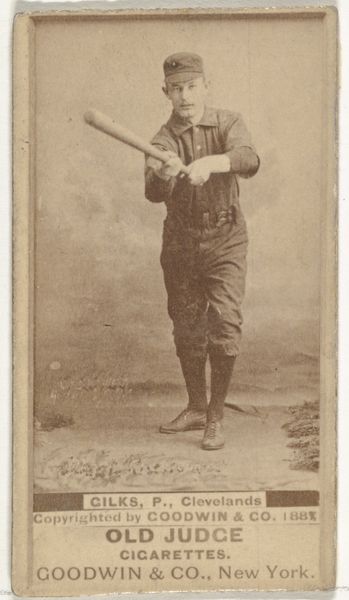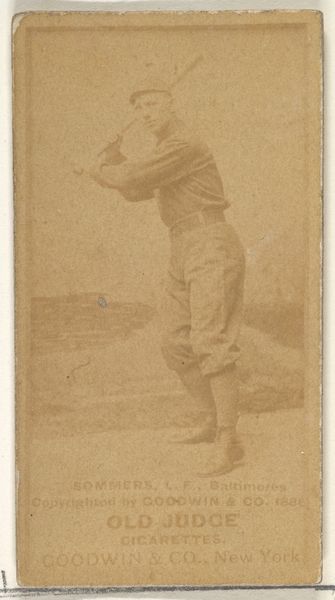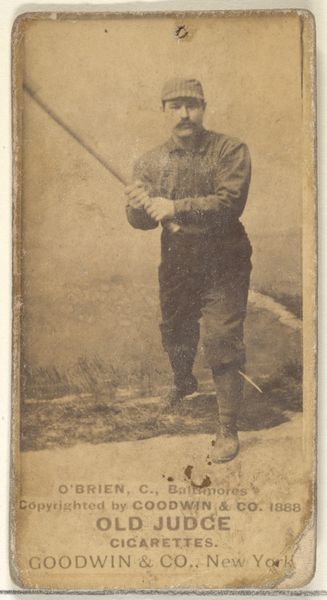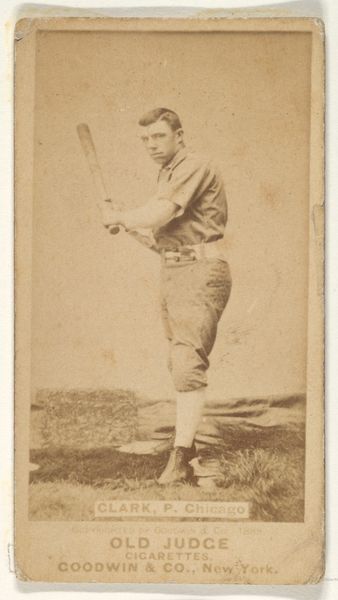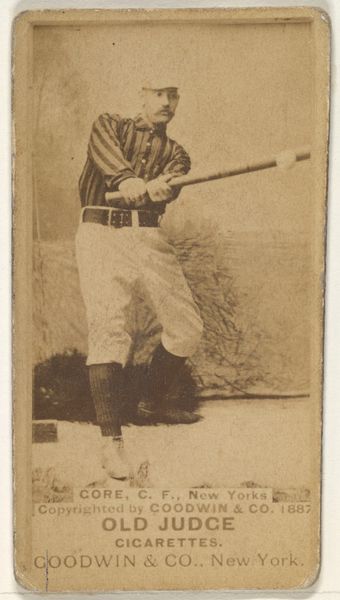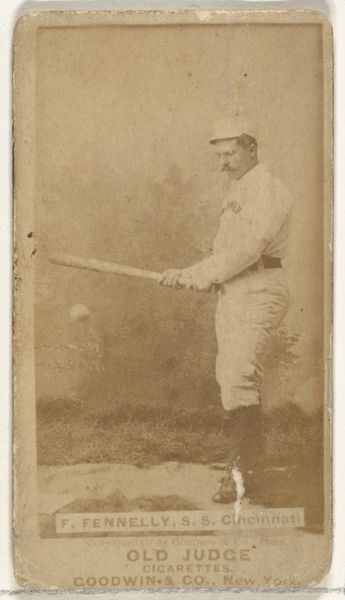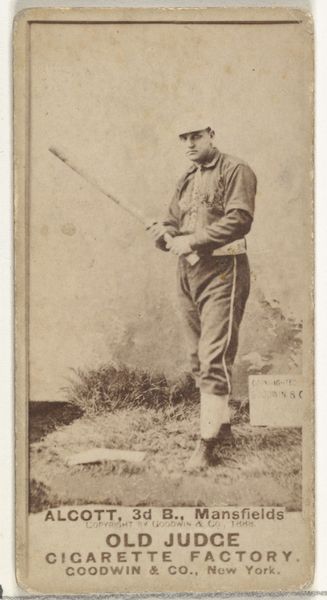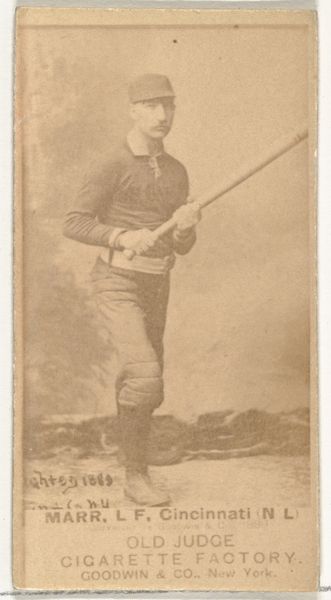
Greenwood, 2nd Base, Baltimore Orioles, from the Old Judge series (N172) for Old Judge Cigarettes 1888
0:00
0:00
drawing, print, photography
#
portrait
#
drawing
# print
#
baseball
#
photography
#
men
#
genre-painting
#
athlete
Dimensions: sheet: 2 11/16 x 1 3/8 in. (6.9 x 3.5 cm)
Copyright: Public Domain
Editor: This is a piece titled "Greenwood, 2nd Base, Baltimore Orioles" from 1888. It's part of the Old Judge series of baseball cards, produced by Goodwin & Company. The card has this faded sepia tone that makes the athlete seem frozen in time, and the texture seems to evoke the aesthetic of late 19th century photographic prints. As the name says, it was printed for "Old Judge Cigarettes." What can you tell me about these types of printed photographs? Curator: Well, it is fascinating to consider how these small cards, included in cigarette packs, functioned as a form of early advertising and popular culture dissemination. These were a promotional tool, of course, but they also democratized art, in a sense. This image wasn't made for a museum, or a wealthy patron, it was distributed to the masses through a commercially available product. Think about the accessibility this provided in an era vastly different from our own, and consider the societal function of the images: who saw it? what did they do with it? Editor: So, its value is really tied to the social context in which it was made and how people engaged with it. Does that impact how we should evaluate its artistic merit today? Curator: Absolutely. To assess "artistic merit" requires that we think critically about the role of images in constructing identity, particularly around sport. The production quality of the photographs or drawings might not align with traditional artistic techniques, but the photograph contributed to shaping perceptions of athletes, the then-emerging sport of baseball, and ideals of athleticism and masculinity at the time. Editor: That's so interesting! It's amazing how much we can learn about society from something as seemingly simple as a baseball card inserted into a pack of cigarettes. Curator: Exactly. These "simple" artifacts often hold a mirror to complex societal values and power structures. Looking at art through this lens opens a space for very relevant critiques of museums and artistic canon itself.
Comments
No comments
Be the first to comment and join the conversation on the ultimate creative platform.
